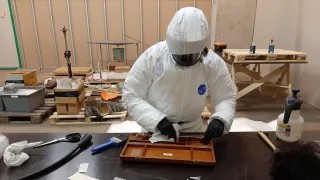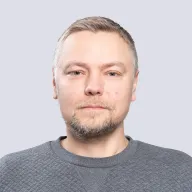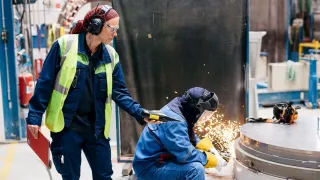Perceived and measured hazards in Finnish museum work environments – MUHA

Objectives
The museum sector is one of the few occupations for which a comprehensive survey of working conditions has not yet been carried out, although there is a wide range of chemical and biological hazards associated with museum collections and work environments. Asbestos, mercury, lead, arsenic, PCBs, etc. may have been used as materials for museum pieces. Residues of insecticides used for the protection of museum collections, including arsenic compounds, mercury and naphthalene, may also be major sources of exposure. Mold and microbial concentrations in premises and collections may increase, for example, due to water damage. Museum collections can be contaminated by asbestos fibers released from the building materials of storage rooms or get sooty in fires. Exposure of museum workers to siliceous dust may occur during archaeological excavations.
Although in recent years the debate on the risks of museum work has gradually started in Finland, the working conditions of the museum sector and the health risks associated with the work have not yet been studied very extensively. The workplaces may not even be aware of many of the risk factors. As the control measures introduced in Finnish museums are not mainly based on occupational hygiene assessments, it is possible that the measures are partly mistargeted, over- or undersized and rely particularly on the use of personal protective equipment.
The aim of the project is, on the one hand, to find out the subjective views of persons working in Finnish museums on the hazards of museum work and work environments and, on the other hand, to objectively identify the most important chemical and biological hazards associated with collections and museum work spaces. By comparing these, the most effective means can be found to prevent and reduce the health risks posed by collections and work environments.
Data and methods
During the project, two questionnaire surveys will be carried out to identify views on occupational risks and hazardous work environments, identified chemical and biological exposure agents, control measures taken, accidents and near misses, occupational symptoms and diseases, and ethical conflicts related to the protection of people and museum objects.
Nine museums selected for research are carrying out occupational hygiene measurements in order to collect data on occupational exposure. A wide range of hazards specific to the sector are represented in the research sites. The samples will be analyzed in the Work Environment Laboratories of the Finnish Institute of Occupational Health.
Results and impact
On the basis of the research results, digital guidelines will be drawn up for Finnish museums to identify the most important chemical and biological hazards and to assess occupational risks. The guidelines will present concrete preventive measures to improve the safety of employees and reduce health risks in different work environments. The guidelines will also include advice on how to take into account the hazards in the collection and exhibition policy programs that guide the museums' collection and exhibition activities.
An induction passport is drawn up for the occupational safety induction training of new employees and employees taking on new duties. The passport can be used in workplaces to document that all matters related to the induction training have been handled properly and in a timely manner for each employee.
Based on the research results, the lecture material will be tailored to the courses of students of museology, conservation students, specializing occupational health physicians and occupational health nurses.
Photo: Henna Sinisalo, Helsinki University Museum
Our experts

Evgeny Parshintsev
Funding
The Finnish Work Environment Fund, Finnish Institute of Occupational Health



